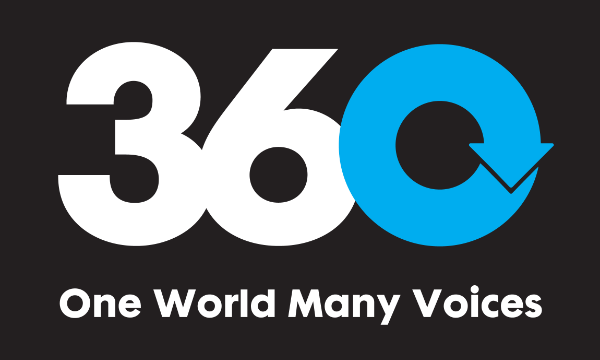A cruelty of climate change is that the countries most immediately suffering its consequences are low-emissions states that least contributed to it. These countries — Small Island Developing states, coastal regions like Bangladesh or archipelegos such as Indonesia — are developing economies, whose progress continues to be blasted backwards by floods, cyclones, rising seas and droughts.
At the 27th conference of the parties to the United Nations climate change negotiations (COP27), taking place next week in Egypt, there will be renewed urgency to support vulnerable countries. The Paris Agreement forged in 2015 recognises the need to “avert, minimise and address the adverse consequences of climate change”. But while “averting” and “minimising” seem covered by mitigation and adaptation action, developing countries argue that the “addressing” part is missing and not defined.
Worse, additional text in the decisions in 2015 exclude any type of finance or compensation for loss and damage. However, developing nations have been fighting fiercely for a loss and damage fund with push back from developed nations. The latest discussion of a dedicated financial mechanism to address loss and damage was again postponed at COP26 in Glasgow in 2021, amid heightened economic uncertainty, despite the growing climate change-related destruction around the globe, particularly in developing economies.
Whether 2022 is going to be the breakthrough year for loss and damage seems unlikely — with the war raging in Ukraine, galloping inflation and more extreme weather events in developed economies, the capacity and willingness of rich nations to make money available is dwindling.
This year, an alternative option to fund loss and damage has emerged: debt cancellation. Developed economies could write off a developing economy’s debts, unburdening them of repayments and interest, allowing them to redirect the money towards supporting their own loss and damage costs.
The idea and its practice is not new. Debt relief, partial or full, can be provided to eligible developing countries through the International Monetary Fund’s Heavily Indebted Poor Countries Initiative. Amongst other criteria, it requires a “Poverty Reduction Strategy Paper” and the amount of debt cancellation then needs to be re-invested into initiatives that benefit the most vulnerable and alleviate poverty. Similarly, the World Bank set up a debt suspension initiative during the pandemic, which allowed developing economies struggling in the COVID-19 pandemic to re-invest into social, health, or economic spending.
Supporting the countries reeling from the impacts of climate change seems like a win for everyone — developed economies wouldn’t need to find new funding and countries in need would have more agency once relieved of their debt obligations. The reality is more complicated, dogged by challenges of feasibility, capacity, transparency and equity.
A valid question is how much a country’s debt write-off can be attributed to loss and damage and how to ensure the funds are spent on addressing loss and damage. Until now, what “addressing” means is not defined or agreed on.
A country’s debt rests with many creditors, ranging from multilateral funds to other countries. Each would have to be engaged and negotiated with to excuse the outstanding debt making difficult calls on which country receives debt relief first, and on what basis.
Any agreement to cancel debt would likely require the excusing parties be assured that the money will reach the most vulnerable communities on the ground and not be swallowed up by corruption, internal bureaucracies, or administrative processes.
It’s still no guarantee that debt cancellation would provide developing economies with the resources and capacity needed to withstand climate change. Several small developing island countries, such as Fiji and Vanuatu, are in the process of strengthening their internal processes to manage their climate finance. Significant challenges, such as cyclones and floods, continue to derail their budget and fiscal position. It’s difficult to forecast how the split of freed-up money would help all aspects of loss and damage. So-called non-economic losses, such as culture, displacement, health or territory could pose a particular problem as money cannot replace them.
That there are challenges does not mean debt cancellation is unworkable. It just means the complicated, increasingly urgent path to financing loss and damage will not be solved simply.
Nuanced proposals that can deliver a solution to the loss and damage question are out there. On a national scale, trust funds, for example, that manage the money spent on initiatives to address loss and damage have formed in various forms, including one in Bangladesh.
Another option is debt for climate swaps, a variation on debt for nature swaps, where debt cancellation and the reinvestment into nature-based projects is negotiated with bilateral and multilateral donors. This was successfully done in the Seychelles. A comprehensive mechanism that could potentially manage debt for climate swaps in developing countries has been explored in a discussion paper by economist Travis Mitchell, however, only for mitigation and adaptation.
As an alternative to climate swaps, cancelled debt could count towards the finance pledge by developed countries of US$100 billion annually.
With any solution, in the absence of a universally agreed definition, it still requires elaboration on what it means to “address” loss and damage and a simple call for debt cancellation without a strategy for re-investment is not as straightforward as it sounds.
Debt cancellation could only solve part of the puzzle but should not dominate discussions on finding a comprehensive and overarching solution to loss and damage finance. Prioritising debt cancellation as a simple form of compensation could hinder negotiations and agreement on mitigation pledges and increased adaptation efforts that avoid more loss and damage in the future.
Debt cancellation mechanisms may bring relief to developing nations that are struggling with the impacts of climate change, in addition to external shocks such as the COVID-19 pandemic. However, rushing into such an ambitious policy could be ill-fated without a rigorous feasibility study and careful planning.
Priyatma Singh is a lecturer at the University of Fiji and a PhD candidate at Linköping University. She is part of an international project that focuses on potential goal conflicts between the Nationally Determined Contributions to the Paris Agreement and the implementation of the Sustainable Development Goals. This project is in collaboration with Stockholm Environment Institute, Sweden.
Dr Melanie Pill is a research fellow at the Institute for Climate, Energy and Disaster Solutions at the Australian National University investigating principles for successful quality adaptation and spending related to the work of the Champions Group on Adaptation Finance and the Global Goal on Adaptation. Her area of expertise and previous research is on financing loss and damage from climate change impacts under the United Nations Framework Convention on Climate Change.
The authors declare no conflict of interest.
Originally published under Creative Commons by 360info™.









